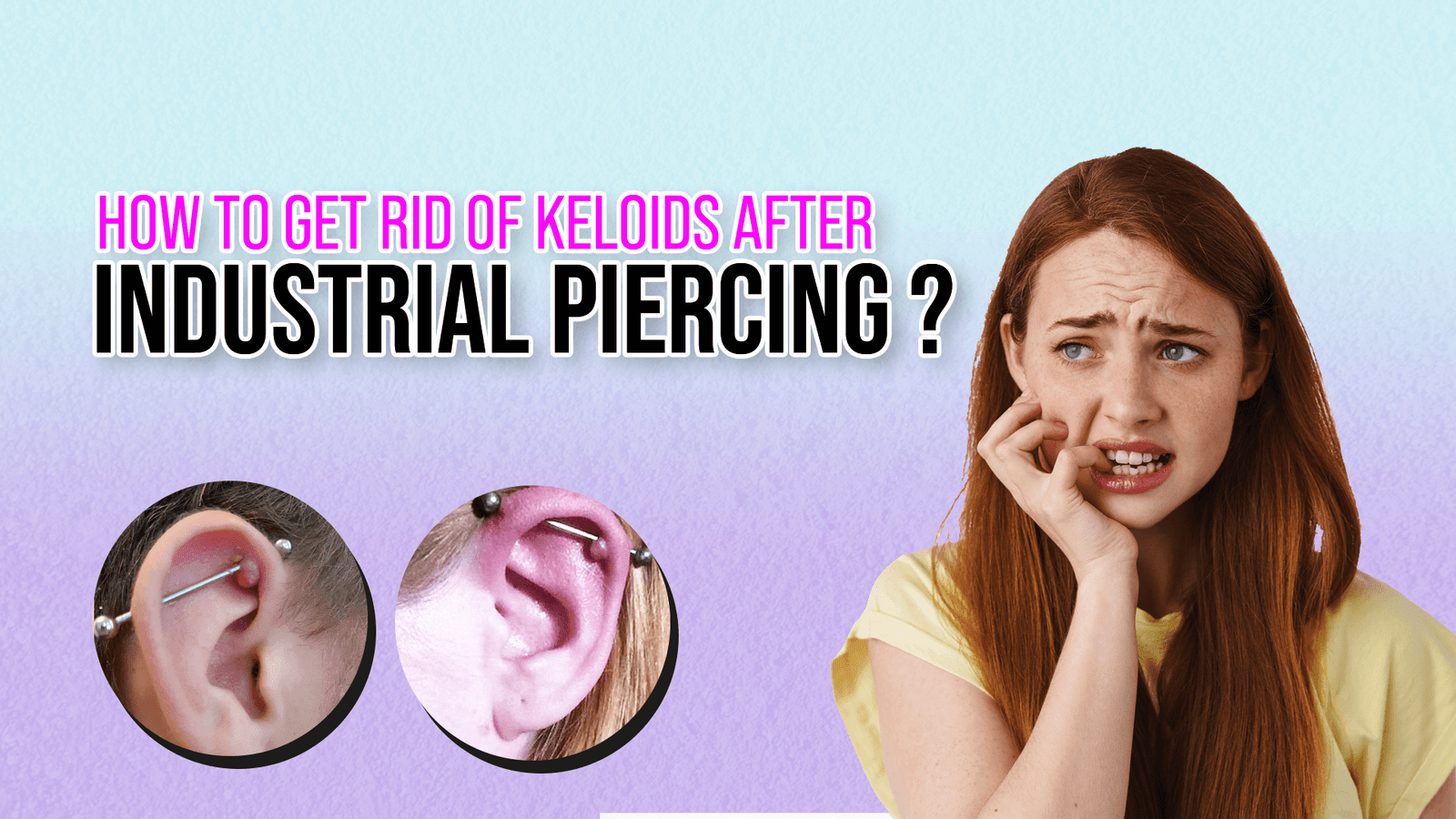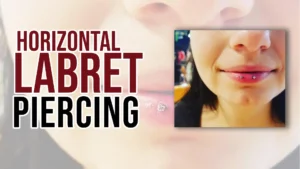A keloid is an excessive scar tissue formation following an accident or lesion. Following skin trauma, such as cuts, burns, and body piercings, keloids can develop. When the body overproduces collagen in reaction to an injury that could eventually expand, they develop.
This issue is surprisingly prevalent, but there are solutions available. We’ll talk about the reasons why keloids develop on industrial piercings in this blog post and provide advice on how to get rid of them. To find out more, keep reading!
What are Keloids and their Symptoms?
When pulled frequently while healing, industrial piercings are at risk for developing keloids, which can result in scarring as well as inflammation. An industrial piercing with a keloid will have elevated, itchy skin that ranges in color from red to purple. However, it is critical to get medical care if you think you may have a keloid.
Since they pierce the sensitive cartilage tissue, industry piercings are especially prone to keloids. Due to the position of the piercing and the degree of tissue stress, this kind of piercing has a greater risk of keloid formation than other forms.
Associated Risk of Keloids with Industrial Piercing
One of the most popular body piercings today is industrial piercing. This is because this piercing style may be quite fashionable and reduced. It does, however, carry a danger, just like any piercing.
Infections are a frequent consequence that you can see at the piercing site. However, swelling, redness, and pain in the afflicted area are indications of an infection. Another potential issue with industrial piercings is keloids.
The height of small ear keloids can reach one and a half centimeters above the skin. Huge ear keloids may be larger than the surface of your ear. There can be further signs of keloids in your ear, which include:
- Tender or Itchy.
- Non-colorful (pink, red, purple, or brown).
- Its color increases as it matures.
- A circular form.
This method does come with some risks, though. The scar may reappear more evident than previously after keloid excision, which can be unpleasant. Keloids occasionally reappear after being surgically removed.
The eradication of Keloid can be accomplished through surgery, cryotherapy, or laser therapy, among other methods. So, it is essential to consider the advantages and disadvantages of keloid removal before moving forward.
Although they can appear on anyone, keloids can take on a variety of shapes and sizes and are more prone to grow on people with darker skin. Although keloids are typically not hazardous, they could be painful and unsightly. If a keloid develops on the professional piercing, one option is to have it completely removed.
Best Ways to Treat Keloids with Industrial Piercing
Your physician can recommend one or more of the following to help you remove a keloid from your ear:
Corticosteroids:
Corticosteroids reduce tissue inflammation and injury. With a small needle, your healthcare provider will inject corticosteroids into the Keloid. A shot will be administered every three to six weeks.
Thus, it may take up to four treatments or more to shrink the Keloid. Corticosteroid injections may cause your skin to hypertrophy and the development of dilated blood vessels in the injected area.
Surgery:
Using a surgical knife with a thin blade, your healthcare provider will eliminate the Keloid from your ear (scalpel). Once the local anesthetic has been applied to the affected area to make it numb, your healthcare provider can remove a tiny keloid from your ear in their clinic.
If the Keloid on your ear is severe, your doctor could advise that you visit a dermatologist. The dermatologist would remove the Keloid using a procedure. A general anesthetic will be administered so that you won’t be conscious while the procedure is being done.
Laser therapies:
A keloid on your ear will be precise by a medical professional. Laser therapy can also help with keloid-related discoloration.
Earrings with pressure:
By exerting pressure on your earlobe to reduce blood flow, pressure earrings (Zimmer splints) keep the Keloid from developing or returning following therapy. They can be uncomfortable and must be worn for a maximum of sixteen hours a day for six to twelve months in order to be effective.
It might be difficult to take care of ear keloids, yet they occasionally come back. Your doctor may suggest combining two or more types of therapies to optimize your results.
Conclusion:
Industrial piercings can be a fantastic way to display your personal style. However, they run the danger of keloids. Injections of steroids, surgery or laser therapy are all possible keloid treatments. Moreover, industrial piercing aftercare is crucial to avoiding infection and accelerating healing.
FAQs:
How quickly can a keloid be reduced in size?
Freezing small keloids with liquid nitrogen may reduce or eradicate them (cryotherapy). Perhaps additional treatments are required. Blisters, discomfort, and loss of skin tone are all potential side effects of cryotherapy.
Do keloids last forever?
Many people are asking if that is keloids reversible or not. Well! A keloid does not age as a hypertrophic scar does. You must treat a keloid in order to lessen its look.





